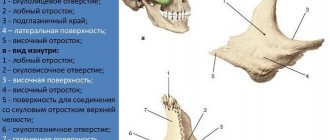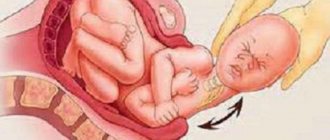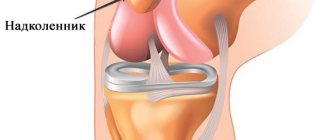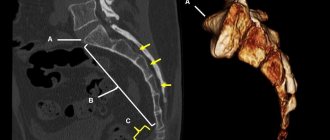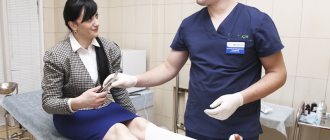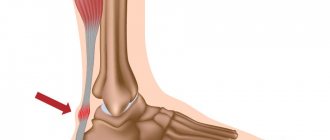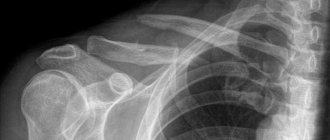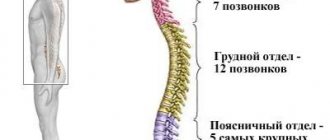Table of contents
- What is the coccyx and do we need it?
- What is the difference between a fractured tailbone and a bruise?
- What are the causes of a coccyx fracture?
- What is the prevention of a coccyx fracture?
- Symptoms of a coccyx fracture
- What is the treatment for a fractured coccyx?
Problems associated with the coccyx occur in people of completely different ages. These could be bruises or (which is much more unpleasant) fractures. Depending on how the coccyx was damaged, the type, location of the fracture and further actions related to its restoration are determined. For example, if there is a fall on the buttocks, then, as a rule, the tip of the tailbone suffers. Children often experience dislocations of the coccyx.
Features of the structure of the coccyx
The coccyx is the lower portion of the spine, which may have three to five fused vertebrae . They are arranged in the form of an inverted pyramid with the base at the top and the apex at the bottom.
Pay attention to the structure of the coccyx
The first vertebra is endowed with modified upper articular processes, the so-called coccygeal horns. Its lateral surfaces have rudimentary (non-functioning) transverse processes. The remaining vertebrae do not have such processes.
Possible causes of a coccyx fracture
Basically, a fracture of the coccyx can be caused by the following possible reasons::
- Severe bruise from falling on the buttocks, for example, slipping on ice;
- Receiving a direct blow to the coccygeal region during a traffic accident;
- Frequent shaking when driving in vehicles with hard seats;
- The passage of a large fetus through the birth canal;
- Injuries received while playing sports;
- Osteoporosis;
- Lack of vitamins and minerals, primarily calcium;
- Congenital diseases of bone tissue;
- Weak muscles.
Symptoms of a coccyx fracture
Below are the main symptoms of a coccyx fracture
A fracture of the coccyx is accompanied by the following symptoms:
- Sharp pain in the coccyx area;
- Redness and swelling at the site of injury;
- Hematoma formation;
- Difficulty and pain when walking;
- Difficulty with bowel movements;
- Increased pain in the coccygeal region when sitting and standing.
Video: “Symptoms of a coccyx fracture”
What indicates the possibility of injury
The first symptom that indicates a fracture-dislocation is unbearable pain in the tailbone area. Pain attacks are especially pronounced during movement, sitting, and even lying down becomes very difficult.
Pain appears during bowel movements, sexual intercourse, and even coughing.
In most cases, the tissue in the tailbone area will swell and a hematoma may, but not necessarily, appear.
Consequences of a fractured coccyx
A coccyx fracture is a serious injury, and if not treated in a timely manner, improper fusion of the vertebrae may occur..
This can lead to quite serious consequences:
- Periodic pain in the area of the fracture;
- Inflammatory process and suppuration in the coccygeal region;
- Headaches, migraines;
- Gout;
- Disorders of the pelvic organs;
- Formation of cysts or growths on the tailbone;
- Problems with bowel movements or urination;
- Formation of salt deposits;
- Neuritis of the coccygeal plexus.
The consequences of a coccyx fracture may appear some time after the injury. This makes further treatment quite difficult.
Our clinics in St. Petersburg
Structural subdivision of Polikarpov Alley Polikarpov 6k2 Primorsky district
- Pionerskaya
- Specific
- Commandant's
Structural subdivision of Zhukov Marshal Zhukov Ave. 28k2 Kirovsky district
- Avtovo
- Avenue of Veterans
- Leninsky Prospekt
Structural subdivision Devyatkino Okhtinskaya alley 18 Vsevolozhsk district
- Devyatkino
- Civil Prospect
- Academic
For detailed information and to make an appointment, you can call +7 (812) 640-55-25
Make an appointment
We draw your attention to the schedule of technological breaks in the CT and X-ray rooms.
With the help of the anterior section of the coccyx, ligaments and muscles involved in the functioning of the large intestine and genitourinary system are attached. The tailbone also distributes the load in the pelvic area, because serves as a support when bending, squatting, and moving.
How and with what help is diagnostics carried out?
If a fracture of the coccyx is suspected, the first step is to take an x-ray of the sacrum and coccyx in several projections . But, often the thin tailbone is hidden under a large mass of soft tissue. Therefore, these studies do not provide an accurate picture of the injury.
If the coccyx is fractured, the first step is to take an x-ray.
In this case, a computer or magnetic resonance imaging of the spine may be prescribed , which allows for more precise detailing. At the same time, these studies also make it possible to see the condition of soft tissues, blood vessels and the nervous system.
These methods are completely safe and painless. A rectal or vaginal examination may also be used. After the examination, the specialist decides which treatment method will be used in a particular case.
Pay attention to what other causes of pain in the tailbone:
- The main causes of pain in the tailbone in women
- To learn about the causes of tailbone pain in men, go here
- What causes pain in the tailbone in women after childbirth, you will find out on the page
Basic information
The coccyx is located at the very bottom of the spinal column; it consists of 3 to 5 vertebrae that are fused together. The bone is beak-shaped, its base is directed upward, and its upper part is directed downward and forward. Its first largest vertebra is connected to the sacrum by the coccygeal horns, thus forming the sacrococcygeal joint.
In children, a cartilage pad is placed between the vertebrae of the coccyx, so this area is mobile. Over time, these elements fuse and form a single bone.
Reference. The tailbone is an almost motionless area. Movements in it appear in women during childbirth, then the bone bends back, expanding the birth canal.
The functions of the coccygeal bone are very important; muscles and ligaments are attached to it, which are necessary for the normal functioning of the organs of the genitourinary system, the most distant parts of the colon. In addition, bundles of the gluteus maximus muscle, which is involved in hip extension, are attached to its outer surface. The tailbone reduces the load on the pelvic bones when the torso is tilted back. This area is surrounded by nerve fibers, so pain occurs when it is damaged.
In most cases, coccyx injuries are diagnosed in patients 33–45 years old (more often in men). Children and adolescents commonly suffer from dislocation of the vertebrae of the coccygeal bone.
Often a fracture of the coccyx is combined with the following injuries:
- fracture-dislocation (often combined with a fracture of the pelvic bones);
- ligament rupture.
In most cases, the following injuries to the lower spine are observed:
- Injury to only the vertebrae of the coccygeal bone.
- Damage to one or more elements, in which the integrity of the intervertebral joints above or below the injured vertebrae is disrupted.
- A fracture of the coccygeal bone, in which the nerve fibers are torn or torn.
- Combined fracture of the coccyx and other segments of the spinal column.
More often, a closed fracture occurs, in which the integrity of the skin over the injured area is not broken.
The weakest area that is usually damaged is the ossified sacrococcygeal joint. Synchondroses (the joints between the vertebrae of the coccyx) are also often damaged.
The most severe are comminuted fractures, in which the intervertebral disc is destroyed and its fragments move.
With an isolated injury, the spinal cord is not damaged, but the risk of pinching or rupture of the cauda equina (spinal nerve roots) increases.
Depending on the severity, there are uncomplicated and complicated coccyx fractures. The latter type of injury is accompanied by damage to nerve structures.
First aid
If you suspect a fracture of the coccyx, first aid should be provided to the victim, it consists of the following:
- The victim is placed on his side or stomach. You cannot lie on your back; the tailbone area should not be adjacent to any surface. All movements should be kept to a minimum;
- Ice or a cold compress is applied to the coccygeal area. This will help reduce blood flow to the damaged area;
- If you experience severe pain, you should take a pain reliever.
After first aid measures have been taken, the victim must be sent to the emergency room for examination. To do this, it is advisable to call an ambulance. If the patient is transported independently, he should lie on his side.
Rehabilitation activities
After 2-4 weeks, depending on the complexity of the injury, it is necessary to undergo a course of rehabilitation, that is, restorative procedures.
Physiotherapy, physical therapy, and hirudotherapy are suitable for this.
At home, you can use Lyapko, Kuznetsov applicators, hand rollers and a variety of massagers.
An excellent remedy is massage, which can strengthen not only the site of the dislocation, but the entire body, weakened after a long period of inactivity.
Today, stone therapy is gaining popularity, that is, influencing the body with stones, and electroangeisia - influencing nerve endings with electrical impulses.
It is best to carry out a set of restorative procedures recommended by the attending physician, taking into account the characteristics of the body and chronic diseases.
After rehabilitation measures, it is worth taking care of yourself and at least temporarily giving up active sports games, riding a motorcycle, cycling, or lifting weights. And under no circumstances allow hypothermia.
Baths with the addition of sea salt, essential oils and decoctions of medicinal herbs will have a beneficial effect.
There are often situations when a dislocation of the coccyx becomes a rather dangerous injury that threatens the normal functioning of the entire body.
If there is a significant displacement of the damaged part of the coccyx, its incorrect fusion may subsequently occur, and this will lead to pinching and compression of nerves, organs or blood vessels.
In this case, the pain becomes unbearable and constant, and surgical intervention cannot be avoided in such a situation.
Treatment
If a fracture of the coccyx was diagnosed during the examination, then first of all a special splint is applied . It is made in the form of a circle of cotton wool and gauze with fastening in the back area. Depending on the severity of the injury, it is worn from two weeks to one and a half months .
During this time, the patient must strictly adhere to bed rest, while lying on his side or stomach. Occasionally and very carefully, you can roll over onto your back for a short time. In this case, the patient can be treated at home with regular observation in the hospital.
Medications
Did you know that...
Next fact
Therapeutic treatment for a fractured coccyx includes the use of analgesics to relieve pain , as well as anti-inflammatory drugs to prevent the development of an inflammatory process at the site of impact. They can be used either as injections or as tablets.
Calcium supplements and vitamin D are also prescribed. If there is no damage to the skin or suppuration, pain-relieving ointments can be used.
Surgical treatment of a coccyx fracture
Surgical treatment of a coccyx fracture is used in the case of an open fracture, trauma with displacement or the presence of fragments, as well as severe damage to blood vessels and nerve endings.
In these situations, open reduction is performed. During this process, the fragments are connected and fixed. The operation is performed manually under local anesthesia. After the procedure is completed, the patient is given a plaster cast. Further treatment is carried out only in inpatient settings.
Rehabilitation after treatment and preventive measures
Usually, after four weeks of treatment for a coccyx fracture, a period of rehabilitation begins , which, as prescribed by a specialist, may include hirudotherapy, exercise therapy, physiotherapy, mud therapy, electrophoresis, and massage. After the injury has been eliminated, pain in the coccygeal region may remain for a long time in one situation or another (sitting, walking, defecation, etc.).
In this case, it is advisable to follow some recommendations that will help reduce them, as well as recover faster from injury:
- When sitting on any hard surface, use a small pillow or other support;
- While sitting, lean forward and periodically move from buttock to buttock to remove excess load from the tailbone;
Read the rules for rehabilitation after a coccyx fracture. Do not sit on very soft surfaces so as not to put pressure on the coccyx area;- Drink at least two liters of water per day. It is also advisable to drink rosehip decoction, green tea and other drinks rich in vitamins and minerals;
- Include in your food as many foods as possible that contain calcium, silicon, and vitamin D. This can be milk and sour-milk products, eggs, seafood and sea fish, beans, lentils, corn, buckwheat and oatmeal, vegetable oils, various nuts. You should also eat vegetables and fruits daily, as they contain a large amount of fiber;
- Take baths several times a week in a sitting position;
- Sleep on relatively hard surfaces;
- If necessary, use painkillers and mild laxatives.
- Do not lift heavy objects, do not ride in vehicles with hard seats or ride a bicycle, and do not play sports.
Compliance with these recommendations will contribute to the rapid recovery of the coccygeal region and eliminate the consequences of injury.
Video: “Simple exercises for pain in the tailbone”
Treatment at home
In order to eliminate the consequences of a coccyx fracture in a short time, after eliminating the injury, you can carry out additional treatment at home.
To do this you can use the following methods that will help relieve pain and restore the tailbone:
- Take a small piece of magnet and lightly massage the coccygeal area with it. Carry out the procedure for twenty minutes three times a day;
- Peel a few raw potatoes and grind them into a paste. Apply the resulting mass evenly onto a thin cloth, fold it in half and apply it to the sore spot. Cover the compress with plastic wrap and cover the patient with a warm blanket. The duration of the procedure should be at least half an hour;
- Grind 50 grams of fresh comfrey leaves, pour in 1 glass of olive oil and simmer over low heat for about half an hour. After this, cool the resulting composition, filter, add 50 grams of beeswax and 20 drops of vitamin E. Mix the ointment well, transfer to a glass container and store in the refrigerator. It should be used in the morning and evening, applying to the coccygeal area with light massaging movements;
- Brew 2 tablespoons of fresh crushed geranium leaves with 1 liter of boiling water and simmer for 10 minutes. After this, cool the composition, strain and use for compresses several times a day;
- Mix 1 tablespoon of table vinegar and 2 tablespoons of honey. Rub this mixture into the coccygeal area three times a day. In between, lubricate the sore spot with olive oil;
- Combine 1 tablespoon each of cottage cheese, kefir, honey and vodka. Beat the resulting mixture well and use it as a compress in the morning and evening;
- Grind fresh wormwood leaves into a paste, wrap in a thin cloth and apply to the sore spot. The compress should be fixed, covered with a warm blanket and lie down for half an hour.
The most important
A fracture of the coccyx should be treated as early as possible, then the bones will heal faster. Displaced injuries are more dangerous; they are accompanied by severe pain and neurological disorders, and therefore are more difficult to treat. For a mild fracture, conservative methods are used: bed rest, analgesics, diet, exercise therapy, physiotherapy, etc. For comminuted damage, bone fragments are compared through the rectum. If after this the coccyx fragments are not held in the correct position, then surgery is prescribed. Surgical intervention cannot be avoided if neurological disorders are present, the functioning of the pelvic organs is disrupted, or the pain persists for a long time. After the main treatment, rehabilitation is carried out. It is important to follow the doctor’s recommendations at all stages of therapy, then the bones will heal faster and you can return to a full life.
Recovery prognosis
It is quite difficult to give a prognosis for recovery after a fracture of the coccyx . Most likely, this can only be done by a specialist who observes the picture of the disease and treatment. The process depends on many factors.
These include the severity of the injury, the course of treatment, the rehabilitation period, etc. If the fracture is not too complex and the victim has completed a full course of treatment and rehabilitation, then, as a rule, the tailbone heals properly, the pain goes away, and the ability to work fully returns. But at the same time, for some time you can only do light work.
Rehabilitation
After the main symptoms of the disease are eliminated, the therapeutic methods do not end, but simply change from therapeutic to rehabilitation. They are presented:
- Hirudotherapy.
- Massage treatments.
- Therapeutic exercises.
- Physiotherapy.
If you consult a doctor in time and receive appropriate treatment, you will be able to get rid of the unpleasant consequences, but if you contact a doctor untimely, you will not be able to avoid complications.

